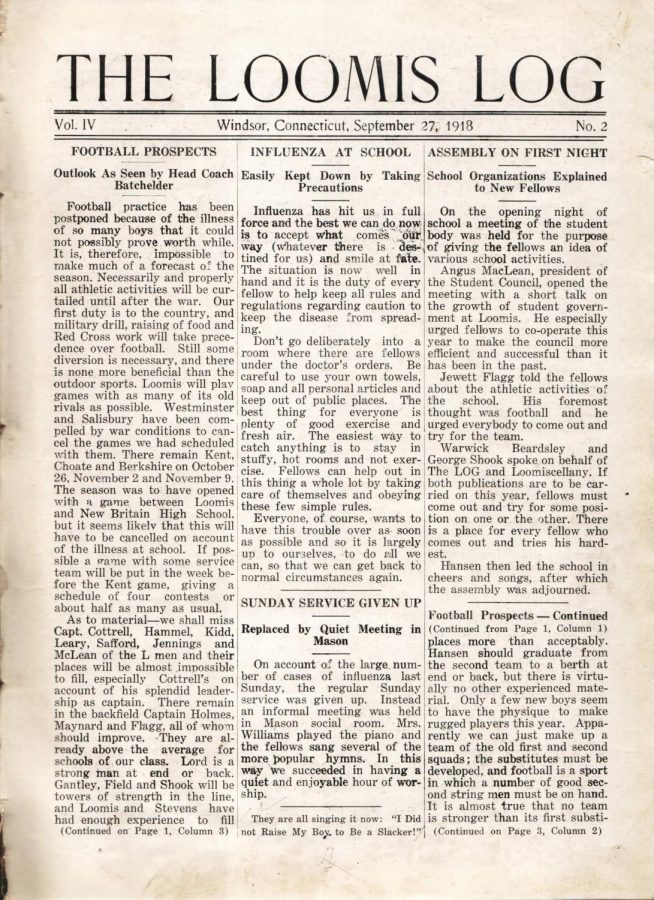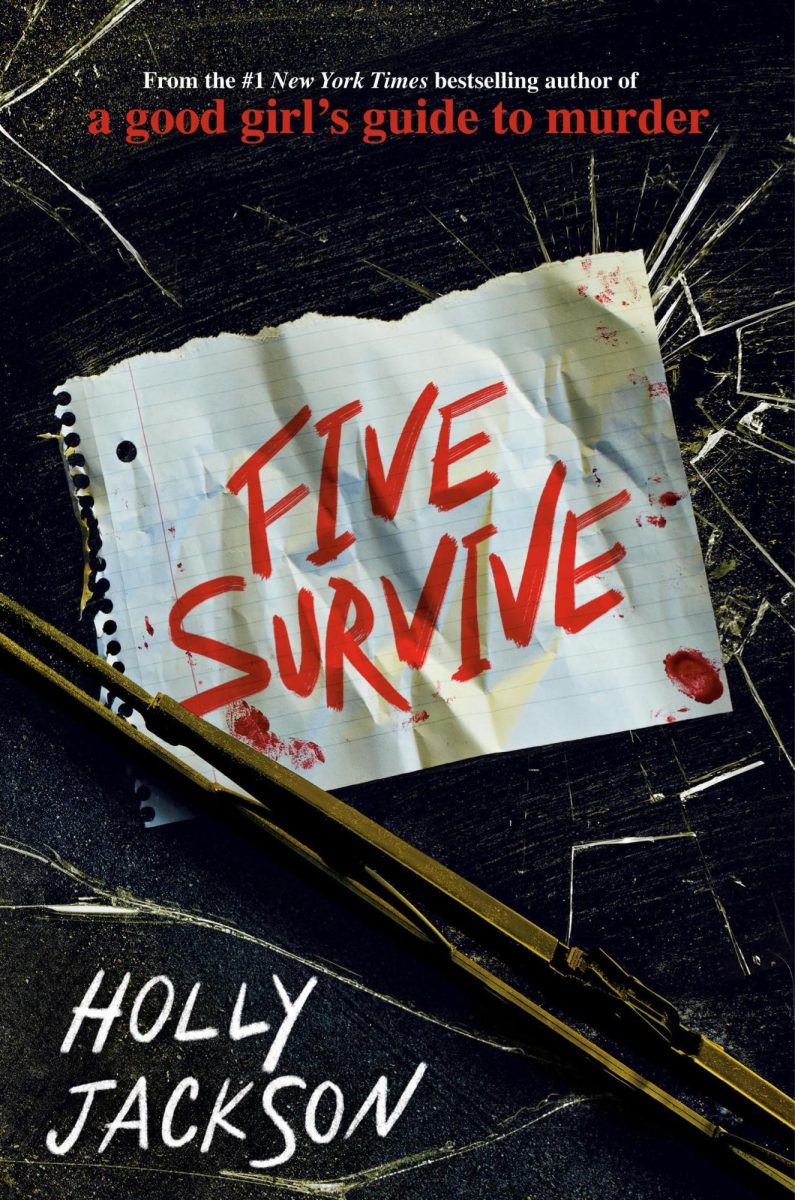Loomis Chaffee’s Approach to Pandemics: A Comparison from 1918 to Today
Loomis Chaffee Archives
The Loomis Chaffee Log published an article during the 1918 Spanish flu pandemic.
April 27, 2020
In 1918, the Spanish influenza pandemic broke out in the United States. Similar to the coronavirus today, students and faculty in The Loomis Institute had to restrict their activities to follow government guidelines.
In addition to the 1918 flu, the United States was fighting in World War I.
“It was definitely wartime. The school turned playing fields and the quad into dairy fields. Some students had stayed over the summer to raise vegetables because the school was growing its own vegetables and had created a cellar for vegetables that could be stored. The focus was really on that and then the influenza hit,” LC archivist and history faculty member Ms. Karen Parsons said.
Despite the turmoil, The Loomis Institute continued to open their facilities. For a few weeks, classes were canceled and day students stayed at home. Boarding students, however, remained on campus.
Major changes were happening on campus. For example, the third floor of Taylor became “like a tiny little hospital,” Parsons said.
Students who lived in the Taylor dorm moved out and went to live in the Shimkus gym. In Shimkus, cots–portable and lightweight beds–were set up to house the healthy students.
Furthermore, the everyday routine of Loomis students and faculty was put on hold. Football practices were cancelled, and the healthy students helped harvest vegetables and milk dairy cows.
During the time of abnormality, the faculty emphasized having things for the students to do and “to keep the intellectual spirit going,” Ms. Parsons said.
Even though regular Sunday services were no longer held, informal meetings were held in the Mason social room.
“That’s the only Log article that talks directly and specifically about influenza at school… Maybe there was an emphasis on keeping everything else going. There’s no dramatic article about the impact or how many people got sick or that kind of thing,” Ms. Parsons said.
For Loomis and Windsor, in general, the influenza pandemic was not too overwhelming.
“By the end of September, about three weeks into the flu, 43 students, 5 teachers, and Mr. Batchelder said ‘2 ladies’, whether that’s wives of teachers or female teachers who taught in the girl’s division,” Ms. Parsons said.
Part of this seemingly successful containment seems to be attributed to Loomis’s organization and preparedness.
“No one died, and a lot of people were crediting Ms. Edward, the one nurse for the whole school…She’s credited with keeping people really calm. She had a quiet confidence about her. She organized all the cots in the gym. She oversaw the health of all the boys and was encouraging things that look like social distancing… don’t go into the rooms of the boys who are sick and things like that,” Ms. Parsons said.
The current coronavirus pandemic is not the first case where students were sent home early due to a disease outbreak. Earlier in March 1918, there was a pink eye epidemic on campus, and students returned home a week early.
In the late 1990s, there was also an outbreak of the stomach flu, and students left a week early for winter break.
“But this whole term away from school is completely new… That’s why this entire term with remote learning is so different,” Parsons said.
While comparing the coronavirus to past flu pandemics can ease worry, providing somewhat of a guideline for how to react, the impact of COVID-19 is far beyond what the world, and Loomis Chaffee, has ever seen before.










Mark LeBlanc • May 1, 2020 at 7:59 pm
loved this article; thank you; very cool to hear of Loomis being out front in 1918;
(i teach computerScience, but i am a hard core WWI buff; check out our recent 3D capture of a cave in France where New England men fighting in France hide in old quarries … and left messages on the walls: [https://www.youtube.com/watch?v=KqeaZFS-Cc8]
i’ll keep reading; thanks …
mark